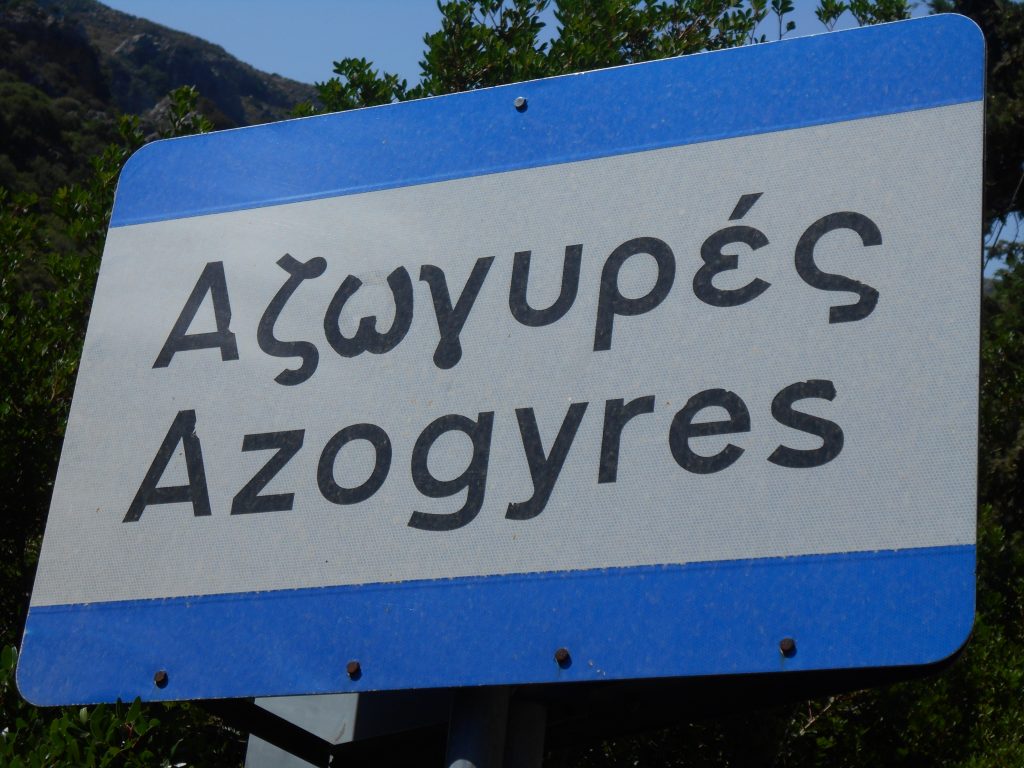
With apologies to the Bee Gees ….
“ Think … we’re going back … to Azogires …
Something’s telling me, we must return ….”
If you enjoyed the short walk around Azogires (Explore ! August 2019), and who wouldn’t, here’s another, slightly longer and more adventurous, especially if you climb up to the “Carved Caves.” Again it’s circular, from the Alfa cafenio in the village, and will take around three hours.
Begin by walking down the lane signed to the Holy Monastery, past the Sacred Tree and old olive mill, over the bridge and below the monastery.
Then climb the path to the former village school, closed since 1980. As with many villages, population has dwindled ; a century ago Azogires held 17 neighbourhoods, with some 400 inhabitants, and the school had between 40/90 pupils, aged 6-14, with just one teacher. When the roll fell below the minimum requirement of 16, it closed.
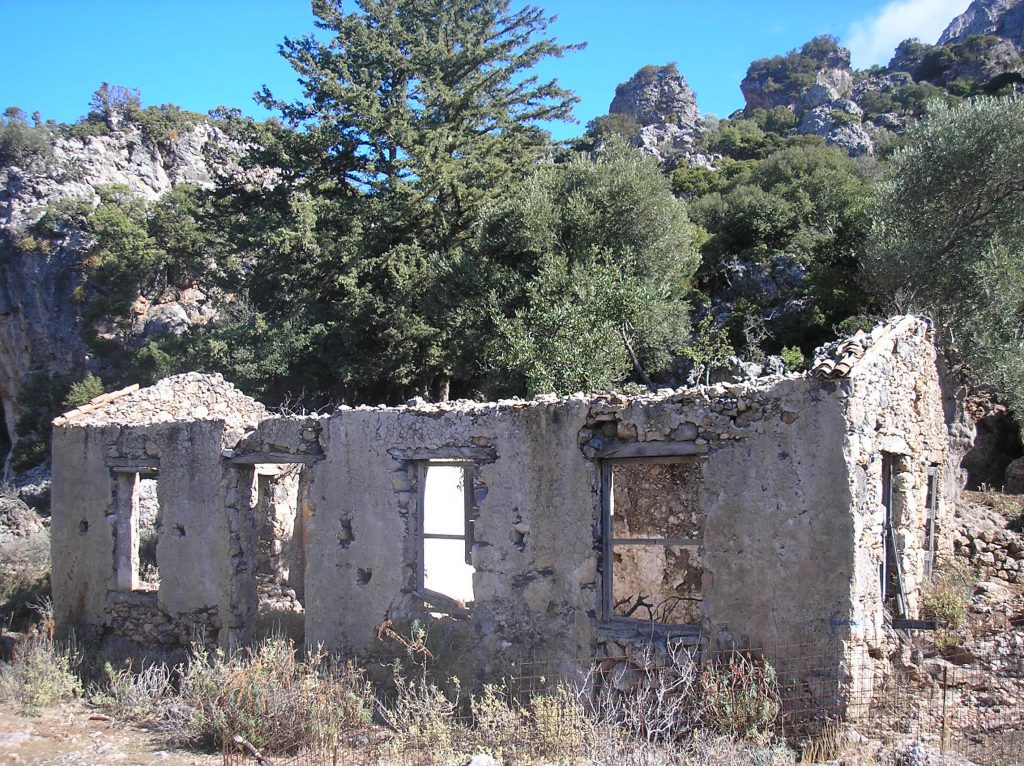
Opposite the school is a prominent rock; climb up carefully for a ‘birds-eye’ view over the valley, with thousands of olive and carob trees below you.
Pass through a ‘gate’ right of the school, where waymarking begins ; after another gate keep right, downhill, to where a track joins from the left.
Continue ahead, past a (dry) spring, up to another road, and turn right for 30m to regain the ongoing footpath.
Just below the path is the Ottoman “village” named Salivariana, after the Salivari, a rich family who lived here, and only abandoned c. 1930, when almost all the 35 inhabitants died from a plague following a wedding feast. Many ruined houses still remain.
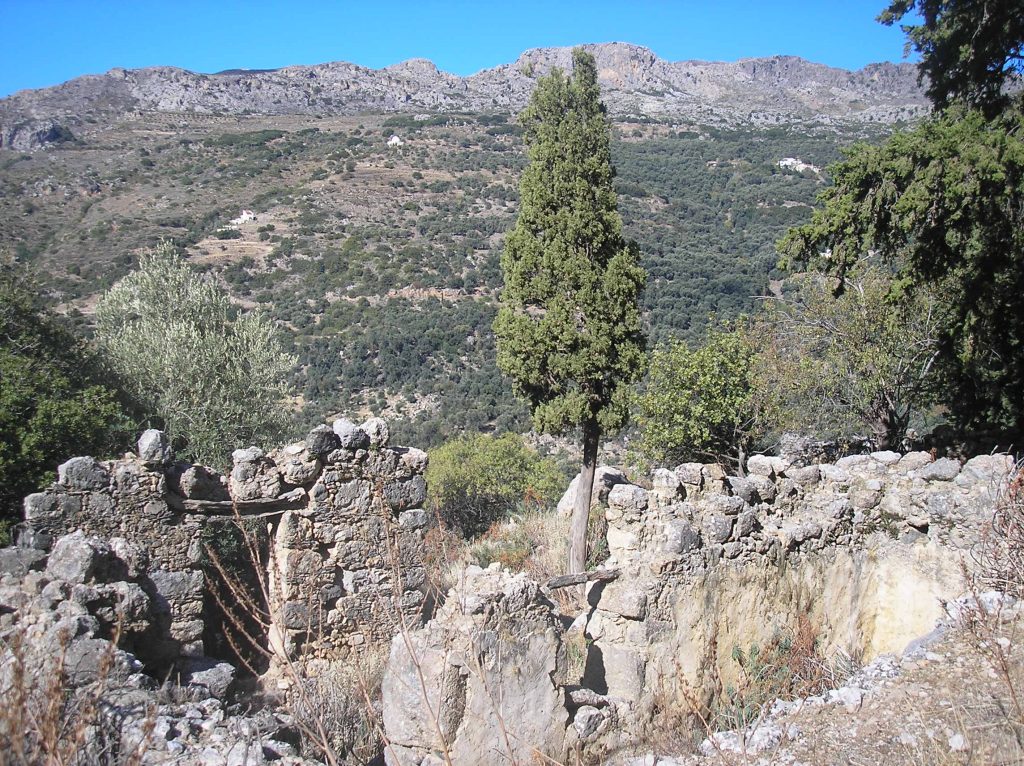
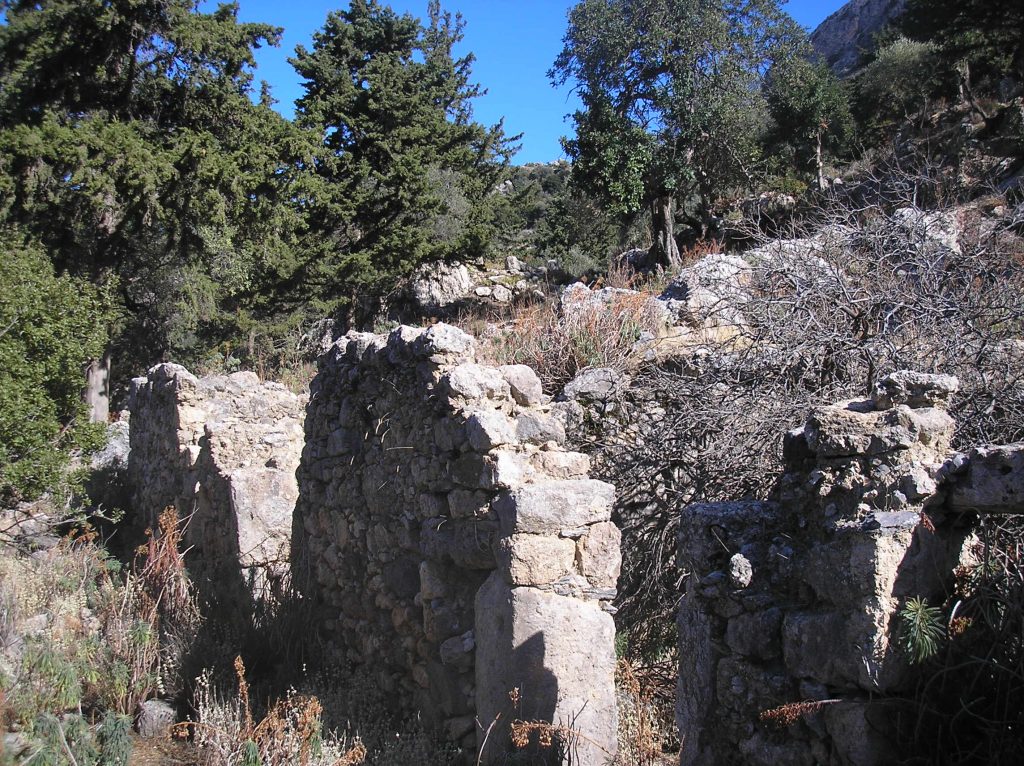
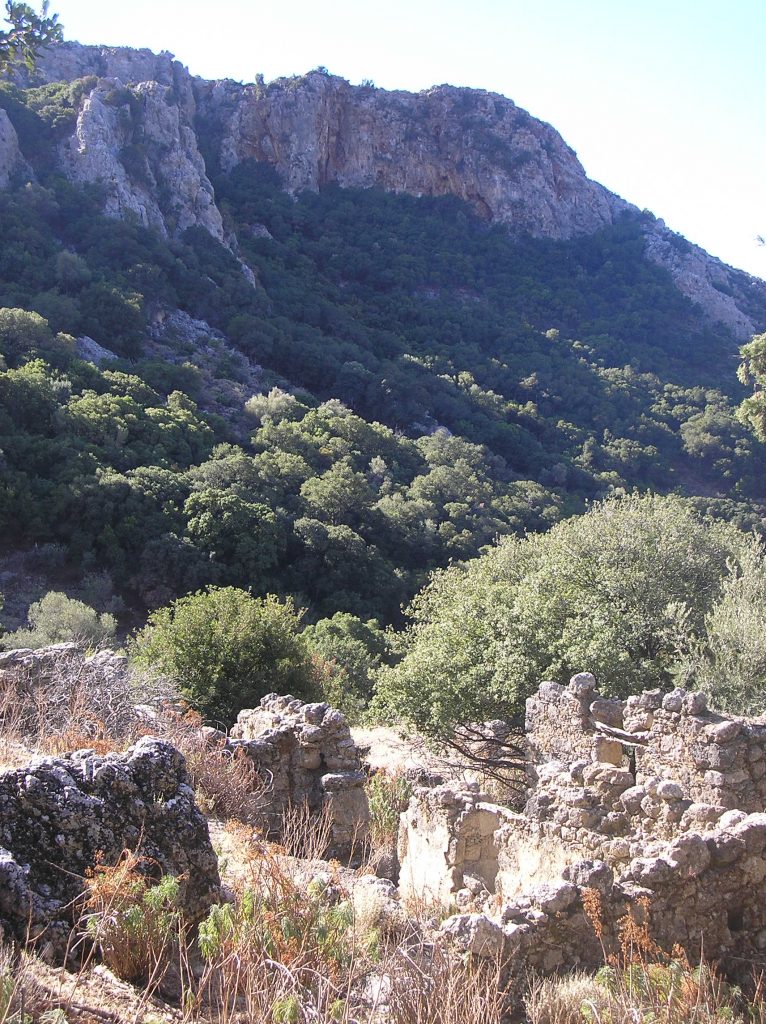
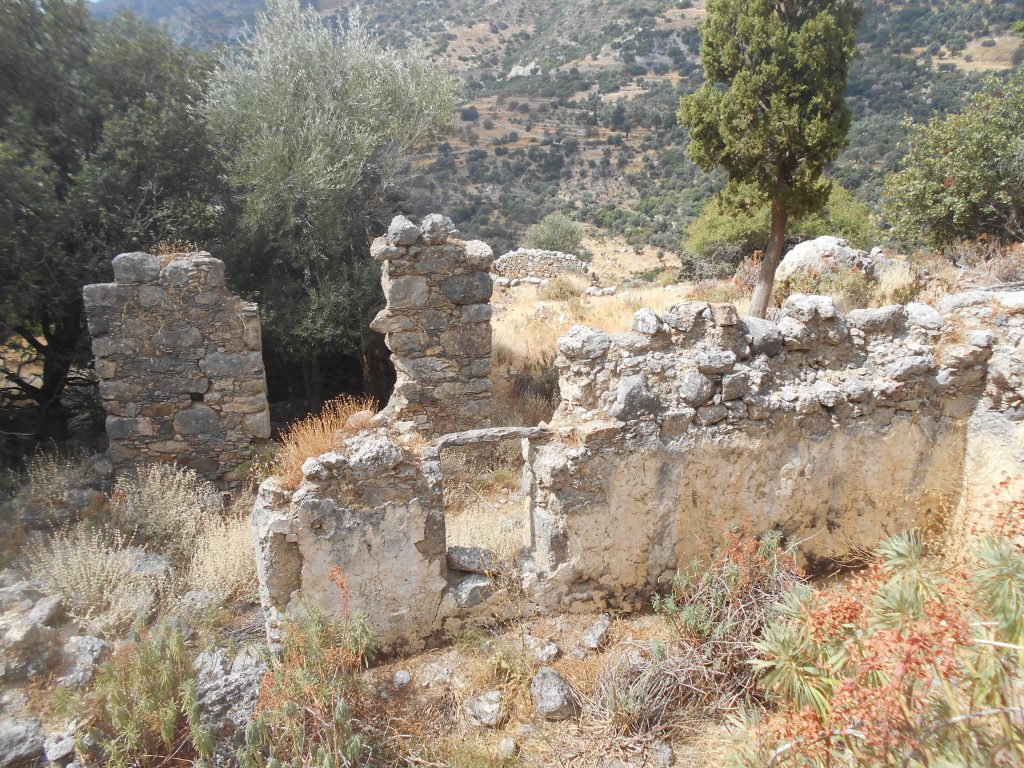
Return 30m to the road and turn right, uphill. Rising steadily, this bends left through aromatic sage bushes to join the previous track, from where signs to the “Carved Caves” will lead you up, through a gate, and around to where a plaque (in Greek) tells us:
“History relates that during the rule of the Turks there existed a fortress for the protection of women, children and the elderly of the area, under the care of the Archimendite Gabriel Papagrigorakis”
The largest and most inaccessible of the caves is called ‘Papaspilio’ or Priest’s Cave, after the monk from the monastery who extended the cave, and installed a water cistern to ensure that local women, children and the elderly could be safeguarded during the often tyrannical Ottoman rule.
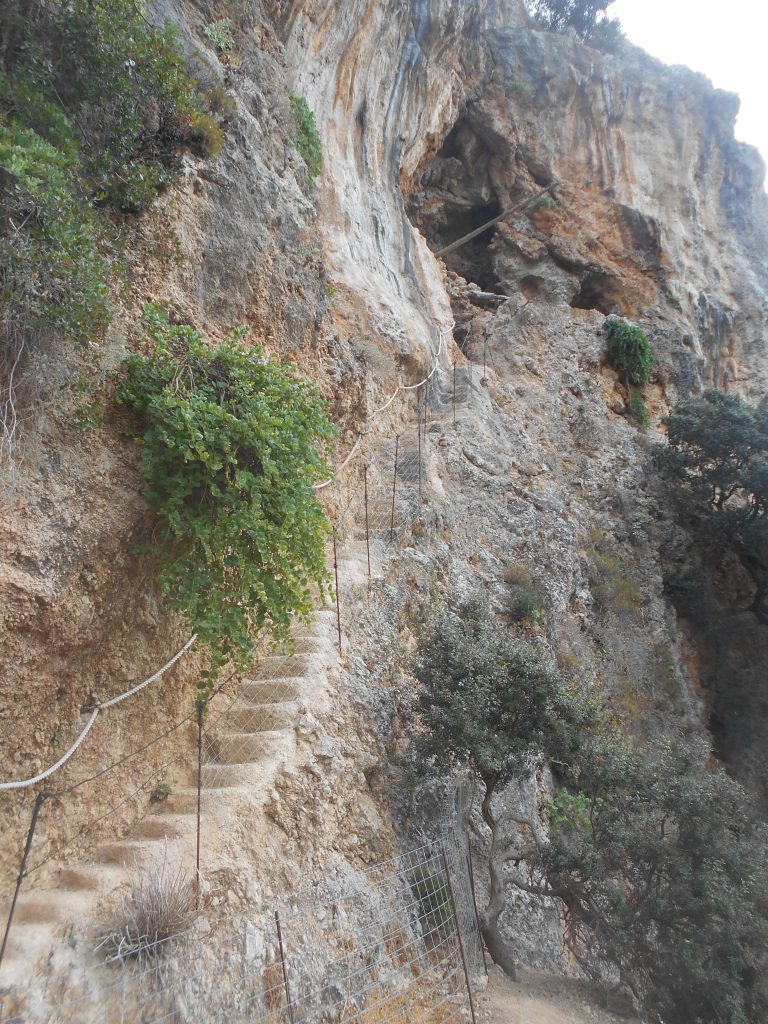
The entrance is some 20m above ground in a vertical rock face. Access is possible (for the intrepid) by stone steps* and a handrail, but in those days was achieved by hauling up those at risk in baskets, by a pulley system. The cave was able to hold large numbers of villagers, hidden from view by walls and tall cypress trees, long since burnt down.
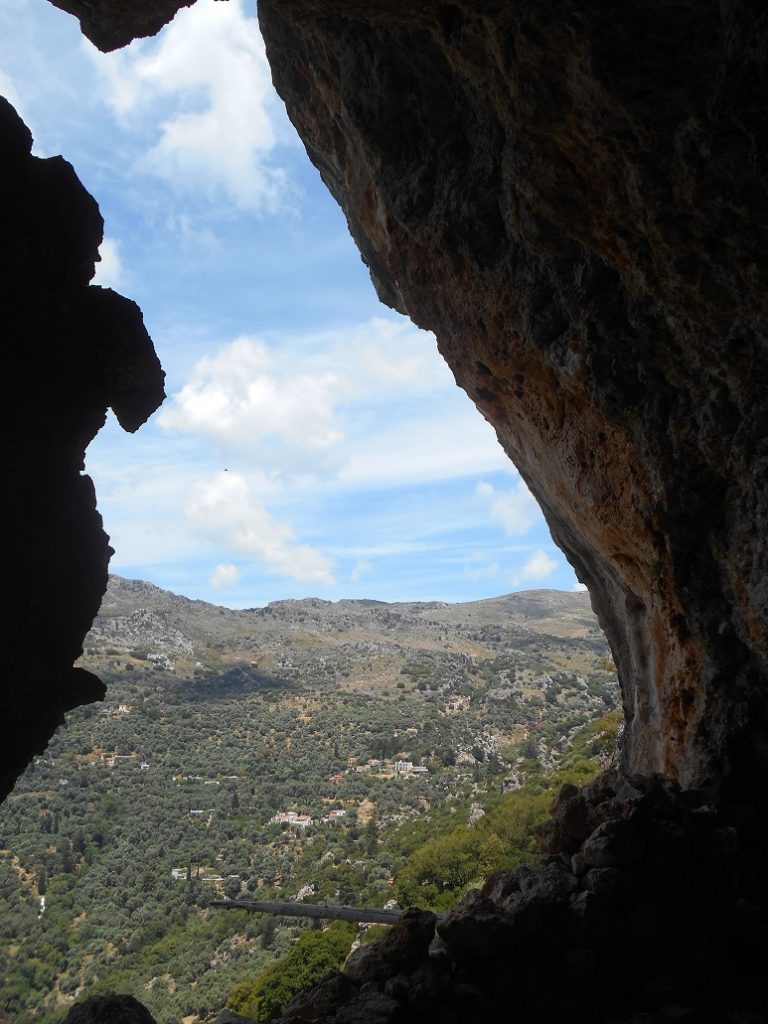
If you reach the cave, the view out is stunning, but mind the edge ….
Return to the track, and climb this, 500m to the surfaced road to Asfendiles.
Turning left, just five minutes’ walk away is a sign (right) to the Koukoutsakis Caves, the one-time home of Lucky’s ancestors. Close to the road (through the gate and follow red paint marks) there are six caves, none very big, where the extended Koukoutsakis family, of around 60, lived in the 18th century.
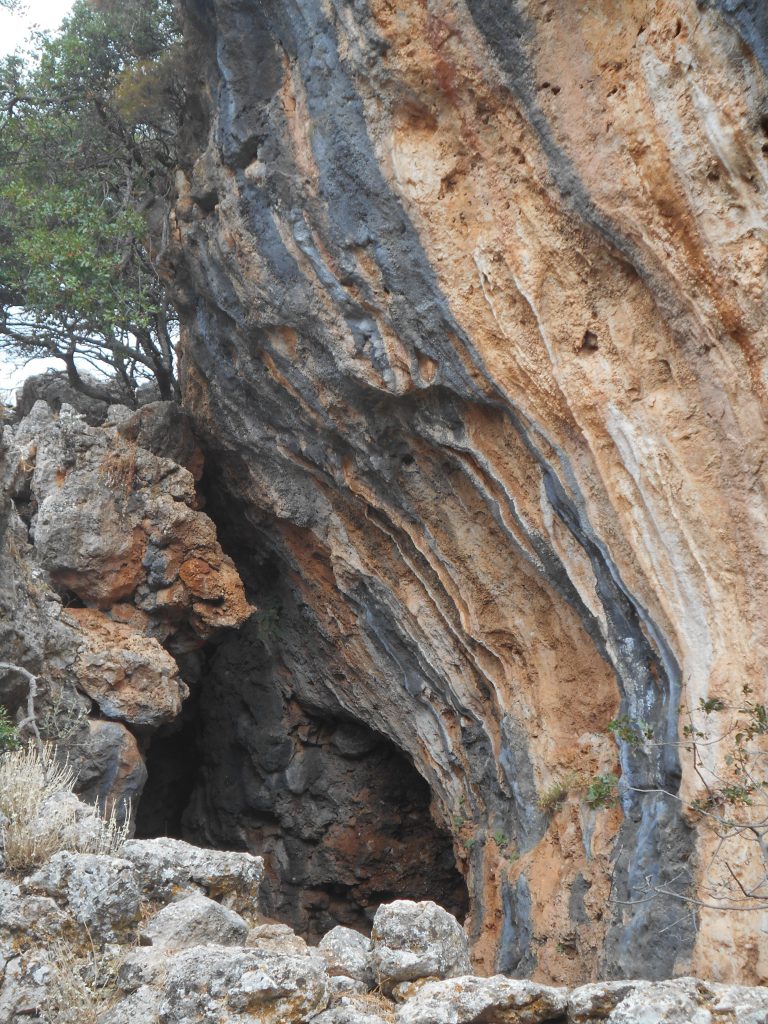
The largest (marked No 1) was where shepherds lived and slept ; others held sheep, goats, a pig, and were used for cheese making. One, slightly higher, was a “sentry post” with men always posted on lookout for incursions from land and sea.
Weekly, the family travelled to Paleochora to trade cheese, fruit, walnuts, olives and oil, and occasionally with a ship voyaging around the coast from Chania.
During the winter of 1941-42, after the Battle of Crete, a New Zealander, Len Frazer, was hidden in these caves, brought here from the mountain village of Koustoyerako by the Koukoutsakis family, who have connections there.
Looked after and fed by the villagers, one morning he disappeared, possibly aware of retributions should he have been discovered. His story, which has a happy ending, is told in the book “ On the Run”, co-written by Sean Damer and Len’s son Ian Frazer (Penguin), which contains extracts from Len’s diaries whilst he was in Azogires.
Back to the road, and then easily down to and across the ford, turning left, passing by – or tempted into – the Azogires waterfalls, and from there to the ever-welcoming Alfa cafe.
Anyone remember the hit by the Dutch group, ‘Pussycat’, in 1975 …… ?
“ Azogires …. I’ll remember you …
Whenever I should go away,
I’ll be longing for the day,
When I’ll be in Azogires again ….
Azogires … you’ll be on my mind …
Every time I hear this song,
Azogires roll along …
Until the end of time …..”
*The steps were carved into the rock face c. 2005 : access until then was only possible by free-climbing, see photo taken in 1999.
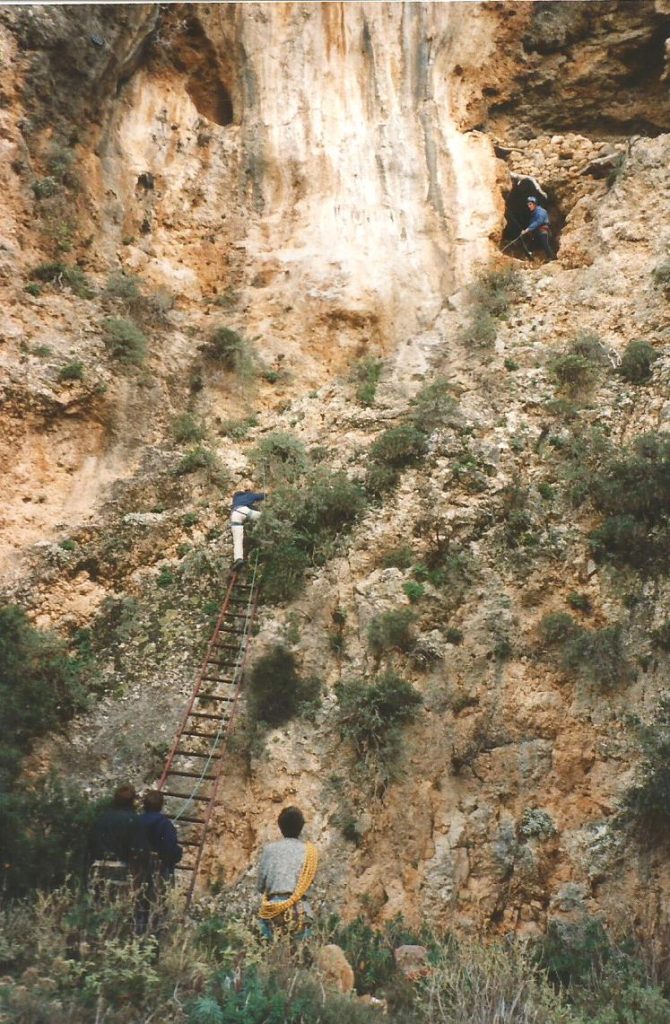
Thanks as always to Lucky and Rebecca for wonderful evenings of hospitality and stories.


Recent Comments